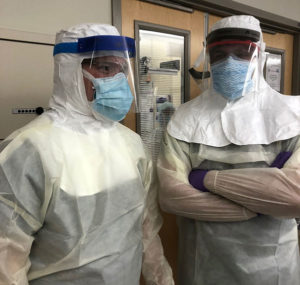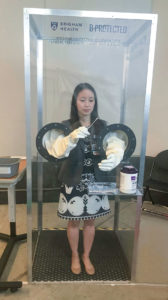COVID-19 Driving Evolution in Rheumatology Teaching
In the span of just a few months, the COVID-19 pandemic has transformed the practice of rheumatology and the entire field of clinical medicine. Traditional ways of doing things, from seeing patients to leading teaching rounds, have been temporarily or permanently abandoned.
Nevertheless, teaching hospitals must stay true to their mission of educating the next generation of clinicians. And so, many are striving to adapt to this strange new reality. Read More
 Dr. Matthew Rochefort and Dr. Anthony Coppolino prepared to perform a bedside percutaneous tracheostomy in a COVID+ patient.
Dr. Matthew Rochefort and Dr. Anthony Coppolino prepared to perform a bedside percutaneous tracheostomy in a COVID+ patient.